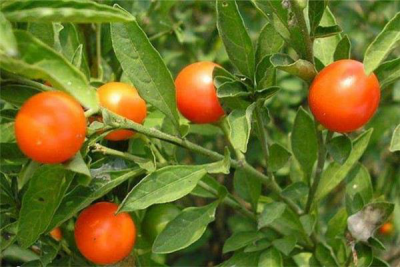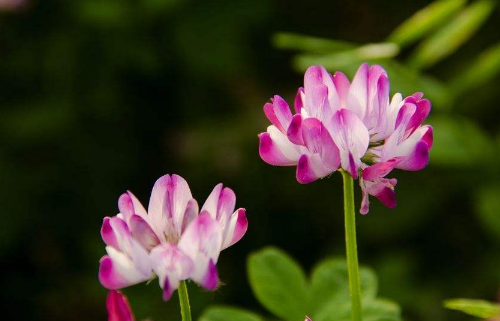Cultivation method of multicolored taro
1. Temperature
Colorful taro is a tropical plant, which likes warmth. The suitable temperature for growth is between 25-30 ℃, and the temperature in winter is controlled at 15-20 ℃, otherwise the leaves will turn yellow and the plants will wither.
two。 Light
Colorful taro naturally like the sun, lack of light will make the spots on the taro leaves will be dark, the leaves are weak, usually can be protected in different places, but make sure to receive more than 3 hours of light every day.

3. Moisture content
Colorful taro likes to be moist, especially in spring and summer. Water can be irrigated once a day in the morning and afternoon to keep the soil moist, and water can be sprayed around the leaves to maintain humidity.
4. Fertilizer application
Colorful taro can be fertilized once a month during the growing period, mainly nitrogen fertilizer, nitrogen, phosphorus, potassium combined application, if found that the old leaves turn yellow and sag should be cut off in time.
Introduction to the culture methods of colorful taro and precautions in culture the hot summer is rewarding the earth with its fiery enthusiasm, and the air is filled with hot air. Do you know the colorful taro? And summer is the season to watch the colorful taro, its leaves are colorful and very beautiful. Colorful taro is an excellent foliage plant. Today, I would like to take you to understand the culture methods and matters needing attention of colorful taro.
Culture method
1. Light
Colorful taro is a tropical plant, which can only grow healthily in an environment of more than 20 ℃. Nature likes the sun, if there is not enough light, the colorful spots on the leaves will become dark, and the leaves will grow feebly. So in peacetime maintenance, do not put in a fixed position, mobile display, to ensure that more than 3 hours of light time every day.
two。 Temperature
The colourful taro is extremely intolerant to cold. The most suitable temperature for growth is between 25 and 30 ℃, and the lowest can not be lower than 20 ℃. The winter temperature should be controlled at about 15 ℃, otherwise the leaves will turn yellow and the plants will wither. When the temperature is 22 ℃, the tuber will sprout new leaves. Therefore, the winter temperature is controlled between 15 and 20 ℃ to avoid excessive temperature affecting dormancy.
3. Water and fertilizer
Colored leaf taro likes to be wet and needs a lot of watering in spring and summer to keep the basin soil moist but avoid stagnant water. During the growth period of colored-leaf taro, fertilizer was applied once a week, and nitrogen, phosphorus and potassium were applied together, mainly nitrogen fertilizer.
4. Change the basin in time
Colored leaf taro requires loose soil, fertile soil and good drainage. Since it is necessary to change the pot in this way, it is actually easier to change the pot than other plants, because the colorful taro is dormant in winter and replanted in spring, replacing half of the new soil and burying the tuber a little deeper.
Matters needing attention
1. Control of diseases and insect pests
Diseases and insect pests are rare, need to pay attention to protect tubers, tubers in storage prone to dry rot, once found in time to spray carbendazim. Leaf spot disease is easy to occur during the growth period, which should be mainly prevented, and fungicides should be sprayed every month to protect the healthy growth of plants.
two。 Protect tuber
April to August is the peak growing season of colorful taro, at this time to ensure adequate nutrients. After September, the leaves will gradually wither. At this time, we should reduce watering and stop fertilization, so that the tubers can survive the winter safely in the soil. Wait until the next year the spring flowers bloom and continue to grow.
The above are the breeding methods and matters needing attention of the colorful taro. I hope it can be helpful to the majority of flower friends. Please continue to pay attention to the succulent flower bed and learn more about flower conservation.
Culture methods and matters needing attention of colorful taro (colored leaf taro)
Culture methods of colorful taro
Where do you keep it?
Colorful taro is a tropical plant, which can only grow healthily in an environment of more than 20 ℃. Nature likes the sun, if there is not enough light, the colorful spots on the leaves will become dark, and the leaves will grow feebly. So in peacetime maintenance, do not put in a fixed position, mobile display, to ensure that more than 3 hours of light time every day.
Temperature control
The colourful taro is extremely intolerant to cold. The most suitable temperature for growth is between 25 and 30 ℃, and the lowest can not be lower than 20 ℃. The winter temperature should be controlled at about 15 ℃, otherwise the leaves will turn yellow and the plants will wither. When the temperature is 22 ℃, the tuber will sprout new leaves. Therefore, the winter temperature is controlled between 15 and 20 ℃ to avoid excessive temperature affecting dormancy.
Water and fertilizer are in place.
Colored leaf taro likes to be wet and needs a lot of watering in spring and summer to keep the basin soil moist but avoid stagnant water. During the growth period of colored-leaf taro, fertilizer was applied once a week, and nitrogen, phosphorus and potassium were applied together, mainly nitrogen fertilizer.
Change the basin in time
Colored leaf taro requires loose soil, fertile soil and good drainage. Since it is necessary to change the pot in this way, it is actually easier to change the pot than other plants, because the colorful taro is dormant in winter and replanted in spring, replacing half of the new soil and burying the tuber a little deeper.
Matters needing attention in the culture of colorful taro
Beware of diseases and insect pests
Diseases and insect pests are rare, need to pay attention to protect tubers, tubers in storage prone to dry rot, once found in time to spray carbendazim. Leaf spot disease is easy to occur during the growth period, which should be mainly prevented, and fungicides should be sprayed every month to protect the healthy growth of plants.
Protect tuber
April to August is the peak growing season of colorful taro, at this time to ensure adequate nutrients. After September, the leaves will gradually wither. At this time, we should reduce watering and stop fertilization, so that the tubers can survive the winter safely in the soil. Wait until the next year the spring flowers bloom and continue to grow.
- Prev

Matters needing attention in the reproduction of winter coral
1. Methods of reproduction. Winter coral is generally propagated by sowing or cutting. Spring propagation is carried out by sowing or cutting, while autumn propagation is most suitable for cutting. 2. Diseases and insect pests. Winter coral is prone to anthracnose in summer, which affects the growth of stems and leaves.
- Next

Culture method of Artemisia mandshurica
1. When the soil is used to plant Artemisia mandshurica, the minimum requirement is healthy, loose and well drained, and the soil cannot contain bacteria or eggs. If the PH value is between 5.57.5, it is most suitable, of course, the fertile soil will be more conducive to the growth of Artemisia mandshurica. 2. Ziyunying prefers sufficient light.
Related
- Fuxing push coffee new agricultural production and marketing class: lack of small-scale processing plants
- Jujube rice field leisure farm deep ploughing Yilan for five years to create a space for organic food and play
- Nongyu Farm-A trial of organic papaya for brave women with advanced technology
- Four points for attention in the prevention and control of diseases and insect pests of edible fungi
- How to add nutrient solution to Edible Fungi
- Is there any good way to control edible fungus mites?
- Open Inoculation Technology of Edible Fungi
- Is there any clever way to use fertilizer for edible fungus in winter?
- What agents are used to kill the pathogens of edible fungi in the mushroom shed?
- Rapid drying of Edible Fungi

